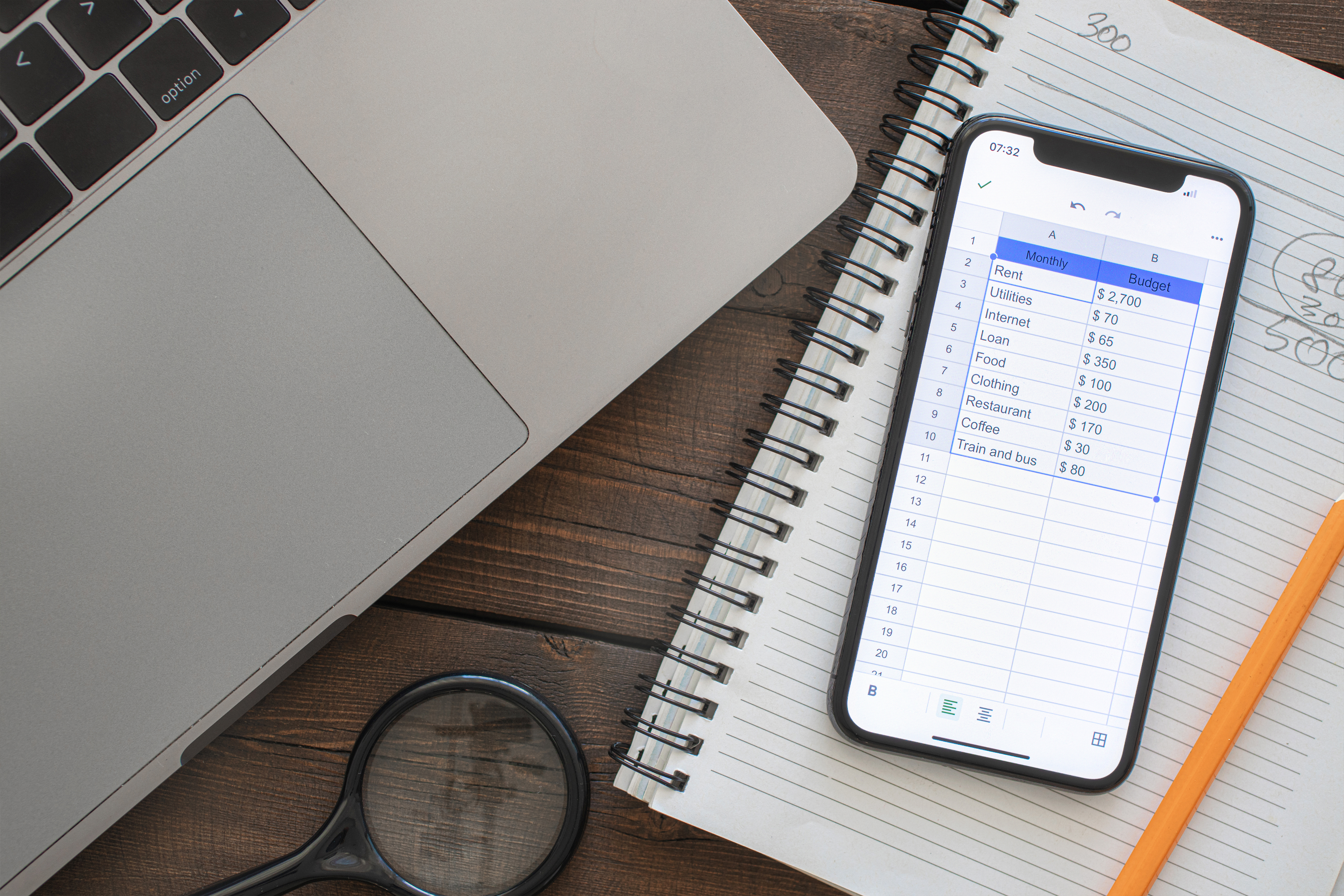Part of Our Monthly Series: What They Don’t Teach You in School About Money
Together with National Debt Relief, we’re creating a series titled, “What They Don’t Teach You in School About Money.” In this series, we go over the most important money-related topics you’ll come across in your day-to-day life that they may not teach you in school. After our first topic “Investing 101”, we’re moving on to topic #2: Budgeting.
What is budgeting?
Budgeting is all about creating a financial plan and outlining how you will spend your money. This process involves tracking your income and expenses to make sure your money flows towards whatever you need and want, both in the short-term and long-term. A budget is a great way to keep track of your progress toward your financial goals and help you identify ways in which you may be able to save some extra money. Sounds neat, right?
Unfortunately, budgeting is often an overlooked topic in school, and that’s why we want to cover it in today’s article. We’ll explain why you may want to start budgeting and give you a step-by-step game plan on how to start doing so. To round things off, we’ll give you a few things to keep in mind while budgeting — all to make sure you succeed in your budgeting journey. Our goal is that after reading this article, you have the tools you need to start taking control of your finances through budgeting. Ready? Let’s start!
Why would someone want to start budgeting?
There are quite a few reasons one might choose to start budgeting. The first and foremost reason for creating a budget is to organize your finances. After going through the process of drafting a budget, you’ll gain an understanding of where your money is flowing, allowing you to make better financial decisions. A budget can help you organize your finances and let you take better control of your financial situation.
Another important reason you may want to start budgeting is that it could help you in reaching big financial goals. Whether it’s buying a house, getting a new car, or saving up for that dream vacation, a budget can certainly aid in your pursuits. Creating a budget and incorporating those big financial goals could make it easier for you to reach these financial milestones, since you will be able to keep track of your progress and have a plan for putting away money towards those goals.
Yet another reason people start using a budget is that it helps them take control of their debt. A budget could you spend within your means and within your budget, and you can choose to prioritize debt repayments as well. If you happen to have significant outstanding debt, you could choose to set up your budget in such a way that you become debt-free in the fastest way possible.
If you have a solid budget that you religiously stick to each month, you’ll have a better understanding of what comes in and what goes out each month. This, together with the knowledge that you’re spending within your means, can help give you a sense of peace. This means that creating a budget could help reduce financial stress and minimize the anxiety you feel around money.
Your 5-Step Plan to Start Budgeting
Now that you know why budgeting could be a powerful tool in your pursuit of control over your finances, you may want to start budgeting yourself. Below you’ll find a 5-step game plan that you can use on your way to become a budgeting pro!
Step 1: Check Your Income
First, ask yourself “what’s coming in every month?” Include every income source you have, if you happen to have more than one. That’ll be your salary, eventual income from investments, rental income, and any gig work you do. Make a list of whatever income hits your account regularly.
Step 2: Track Your Spending
After you know what’s coming in, check what’s going out on a regular basis. To do so, you want to gather as much data as possible. Get bank statements, credit card statements, receipts — anything you can get your hands on. Or simply open your banking app and go through all the expenses you’ve made in the past several months.
Next, categorize these payments into buckets like housing, transportation, utilities, groceries, entertainment, clothes, self-care, and miscellaneous. A good way to do so is with an Excel spreadsheet or budgeting app. [Check our list of the top 10 budgeting apps here.] Every expense should fall into a category. You’ll need these categories later, too, since you’re going to use those to create your budget.
By tracking your spending, you may spot certain patterns in your spending, find areas where you can save, and fully understand where your money flows.
Step 3: Set Financial Goals
Now that you know what has happened with your money in the past, it’s time to start looking at the future. That’s why in this step, we’ll define the financial goals you may want to include in your budget. These goals could be anything. Are you looking to become debt-free within 3 years? Want to go on that dream holiday? Or are you in the market for a house and need money for a down payment? Note your goal amount and desired timeframe and be as specific as possible, so you have something to work with in your budget.
This is also where you may account for investments. For example, a goal of yours could be that you want to have $5,000 invested within 3 years. Or maybe you want to prepare for a rainy day and start building up your emergency fund by putting in $50 every month. This is the step to note those goals.
Step 4: Create Your Budget
In step 4, we’re actually going to create your budget. This is where you assign a portion of your funds to each expense category (remember the categories from step 2?) and the goals you’ve defined in the previous step.
A popular method you may use for assigning funds to these categories is the so-called 50/30/20 rule. This stands for 50% of your money going to needs, 30% to wants, and 20% to savings. There are also other methods you may use, such as the ‘pay yourself first’ method. This entails first funds to your savings goals and absolutely necessary expenses first, then assigning the remaining funds to your wants.
Honestly, the method doesn’t really matter that much. What’s important here is that you make your budget sustainable. You’ll want to have some wiggle room in your budget, in order for you to be able to stick to it.
Step 5: Monitor and Adjust
Great, your budget is ready! However, after you’ve created your budget, you’re not done just yet. To be frank, our fifth and final step is maybe the most important of all. You’ll want to regularly check your spending against your budget, and gauge whether you’re still on track. Continually ask yourself if your budget is indeed sustainable and working for you.
Also, if something in your life happens to change, such as a move to a different city or a new member that’s added to the family, you may need to adjust your budget. The only constant in life is change, so be prepared to modify your budget whenever needed.
What to Remember When You’re Budgeting
After following the steps, your budget is ready and you’re well on your way to having full control over your finances. But, please keep in mind the following three points in the process!
- Make It Sustainable
Maybe the most important thing to remember when creating your budget is that you want it to be sustainable. A budget is something for the long term if you want to reap all the benefits of what budgeting can bring you. Remember, a sustainable budget is one that has some wiggle room.
- Celebrate Successes
When you find yourself sticking to your budget for a longer period of time, allow yourself to have a little treat once in a while. This can help you stay motivated and stay the course. It doesn’t have to be a big expense, so be creative!
- Make It Work for You
This point is about making sticking to your budget as easy as possible. How? Well, what you could do is automate your transfers to your savings accounts and bill payments (most renowned banks offer this option!). Use a budgeting app and method you’re comfortable with. And review your budget regularly, to check if it’s still in line with how you want to live your life.
Let’s Take Control of Your Finances
How’s your budget looking? Feel confident about your financial future? We certainly hope that after reading this article, you’ve got the tools you need to comfortably create your own budget.
In this article, we’ve gone over why budgeting is such a powerful tool, given you the 5-step plan on how to create your own budget, and told you a few things to remember when dabbling in the world of budgeting.
Whatever your reasons for reading up about budgeting, we hope the information in this article has empowered you to take matters into your own hands. And don’t forget to make it sustainable, celebrate your successes, and make it as easy as possible! That’ll give you the biggest chance of succeeding. Good luck, and let’s take control of your finances!







